#Imbolc shona!
Text
youtube
Lá fhéile Bríde sona daoibh! Tá an tEarrach linn.
#Tús an Earraigh#Imbolc shona!#Lá le Bríde#Imbolg#St. Brigid's Day#Imbolc#Spring#Earrach#Brigid#Irish#Sadbh Kellett#Irish poetry#Irish mythology#Youtube#ireland#lá fhéile bríde#st brigid
2 notes
·
View notes
Photo

Imbolc shona daoibh! (happy Imbolc to you!) 🐄☀🌱
[Image ID: / A coloured sketch of a white calf. It has a golden triskele on its forehead, and its head is bent low to the ground. It stands in a patch of grass revealed by melting snow, dotted with yellow and orange flowers. Behind its head is a golden starburst that mimics the sun. The background is a grey-blue colour, and white text above the calf reads in a mediaeval font: imbolc shona daoibh! (Im-Olk Hunna Yeev) / End ID]
In many parts of Ireland it is believed that on Imbolc, Brigid will go from house to house with her favourite white cow to bless items left outside by the occupants 🌿
#imbolc#imbolg#cow#spring#artists on tumblr#my art#paganism#imbolcposting. i wanted to do something more so :)#celtic reconstructionist#irish paganism#la fheile bride#st brigids day
428 notes
·
View notes
Photo

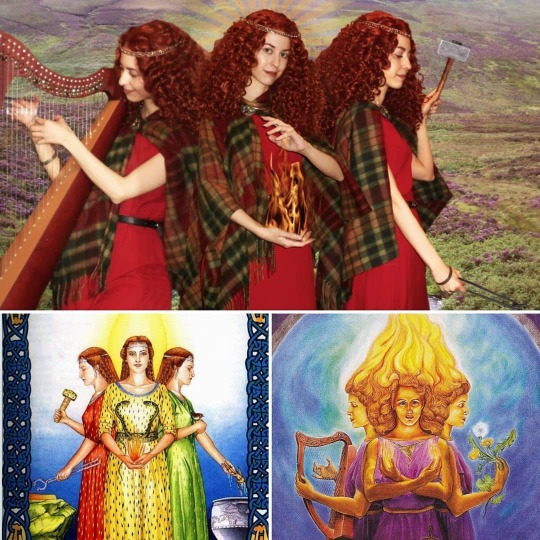

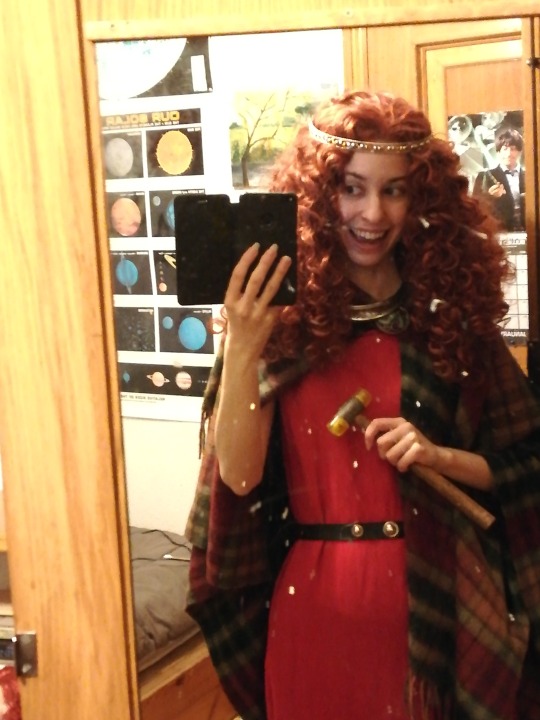
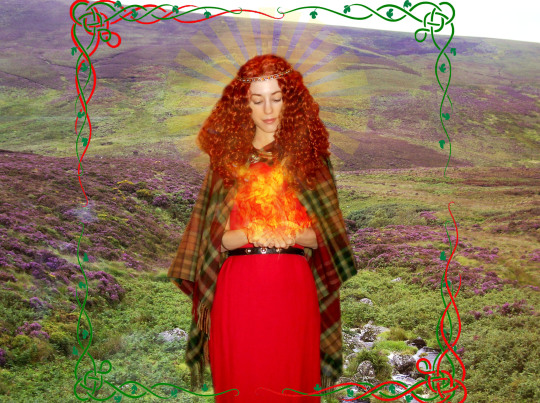




Imbolc 's lá fhéile Bríde shona daoibh! Happy Imbolc (beginning of Spring in the Celtic calendar) and Brigid's Day! 🎶☀️🍃
.
Several edits and a few casual selfies of my 2019 closet cosplay/reenactment of the Irish goddess Brighid, solar fire goddess associated with poetry and inspiration, fertility and healing, smithwork, crafts and music, and warlike protection. She's one of my favourite goddesses in one of my favourite cultures. This new edit focuses on her smithscraft aspect ⚒️
.
My Brigid reenactment posts
DeviantArt
Facebook cosplay page
Cosplay Instagram
#brigid#brighid#brigid reenactment#goddess brigid#imbolc#imbolc brigid#goddess brighid#celtic world#celtic reenactment#celt#celts#ireland#irish myth#irish culture#celtic culture#historical reenactment#historical costuming#irish mythology#wheel of the year#neodruidism#My historical reenactment#brigid's day
34 notes
·
View notes
Text
Imbolc shona daoibh!
Imbolc reminder to those who celebrate: make sure you leave a scarf out so that Brigid can bless it and keep disease away this year!
4 notes
·
View notes
Text
Let's unveil this space with these special days. Imbolc shona daoibh !
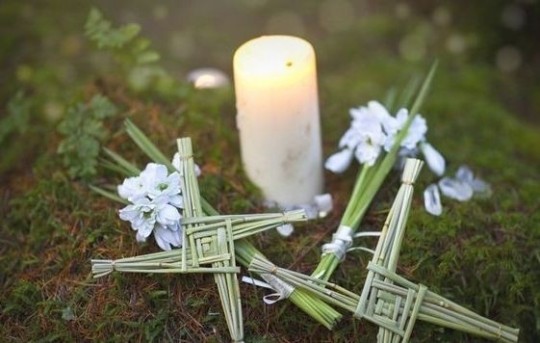
Lá Fhéile Bride / Imbolc
"Among spring celebrations, it's the first, characterized by the purity of the snow, the winter residues swept away, the First Ploughing and seeding." - Nuinn
During Imbolc, we celebrate the spring premises, its rebirth. With other non-solar festivities like Samonios, Beltane and Lugnasadh, it's a fire celebration but for its light and not for its warmth. That's why, generally, we light candles on a plate filled with water.
Imbolc is entirely dedicated to the Mother Goddess, Brighid being the central figure of a trio, and glorifies the Mother and the Child, the Light and the Water. Eight white candles are lit, this number symbolizing the Mother Goddess and the Sun, and these candles rise to the surface like the child during his birth.
It's a great time to start new projects and learn brand-new things too.
Happy Imbolc to all those who will read this !
1 note
·
View note
Text

Lá Fhéile Bríde shona daoibh go léir
(Happy St Brigid's day/imbolc to you all)
1 note
·
View note
Text
Traditional Irish Imbolc customs

What is Imbolc?
In Ireland on the 1st of February, Imbolc (Pronounced Im-Olk) marked the beginning of Spring. Imbolc likely meaning ‘In the belly’(Old Irish “i mbolc” and modern irish “i mbolg”), which could reference both the new life of the womb within animals and humans as well as the seeds of potential within the fertile Earth. At this time, early spring is evident with small buds appearing on the trees and other greenery beginning to emerge. It also marked the beginning of the first milk of the year amongst the livestock. Milk and dairy products are sacred to the Irish and at this time of year when food from the last harvest was becoming scarce, the first milk was very much needed for survival and eagerly awaited.
Goddess Brigid (In Irish her name is Bríd, pronounced breej) was celebrated at this time of year as she warms the earth and brings the spring. She was said to have been born at the exact moment of daybreak, and rose into the sky with the sun, rays of fire beaming from her head. Although a Goddess from pagan Ireland, Brigid became a saint upon Ireland’s conversion to Christianity and she is still very much revered under a different guise (In my opinion) and so Saint Brigid is celebrated on February 1st for St. Brigid’s day rather than Imbolc. The customs are largely the same however.
Traditions we can do today:
Imbolc was celebrated from Imbolc eve at sunset to Imbolc day at sunset.
On Imbolc eve, people would hang out pieces of ribbon/ cloth or a scarf (Called a Brat Bride) to receive Brigid’s blessing as she passes by. The next morning they are collected and kept somewhere safe until someone in the household became sick or injured, the cloth is wrapped around the afflicted area or person for Brigid’s healing powers to work on them. Brigid is the goddess of Healing, Poetry and Smithcraft as well as the hearth fire.
On the day of Imbolc, it was customary to do some spring cleaning and the beginnings of preparations for spring sowing.
Holy wells dedicated to Brigid were visited and people would walk sunwise (clockwise) around the wells as they prayed for health. Offerings were left at the well, typically coins and clooties (strips of cloth or rags) tied to trees beside the well. Well water was used to bless the home, family members, livestock, and fields. An offering could also be milk poured into the ground or porridge poured into the water, as a libation. If you don’t live in Ireland, you can visit any spring well with the same intentions.
Leave out an offering for Brigid at your altar or just outside if you can, including any dairy like milk or butter, porridge or anything you bake like irish scones or soda bread.
Irish soda bread:
https://www.bordbia.ie/recipes/desserts-and-baking-recipes/traditional-brown-soda-bread/
Irish scones:
https://www.irishtimes.com/life-and-style/food-and-drink/back-to-basics-how-to-make-the-perfect-irish-scone-1.3792410
Brigid’s crosses were made from rushes and they were often hung over doors, windows and stables to welcome Brigid and for protection against fire, lightning, illness and evil spirits. They were left there until next Imbolc and the old cross was burned and a new one was made every year. If you’d rather hang it up in a non-christian way, just tilt the cross to look more like an X which then represents the sun instead of the christian cross. You can also make Brigid’s crosses out of anything if rushes are unavailable to you.
How to make a Brigid’s cross: https://www.youtube.com/watch?v=Yn_MG4HZVOo
Here are some more recipes to try if you’d like to have a feast!
http://www.clondalkinparish.com/wordpress/wp-content/uploads/2019/01/St-Brigid-recipes-CCPC.pdf
Imbolc shona daoibh!
(Happy Imbolc to you! Pronounced “Im-Olk Hunna yee-v”)
468 notes
·
View notes
Text

IMBOLC
Traditionally observed on February 1st, Imbolc is one of four major festivals that made up the Gaelic year. It marked the beginning of spring and the start of the lambing season, which would promise the beginning of a new supply of milk.
The festival of Imbolc is also associated with the goddess Brigid, though it is unclear whether this has always been true, or whether it is due to her syncretism with St. Brigid of Kildare, whose feast day also takes place on February 1st. Imbolc is also associated with the Christian festival of Candlemas, which is given the same date.
The name Imbolc may be related to pregnancy (i-mbolg, "in the belly"), or purification (imb-fholc, "to wash"), or to sheep's milk (oí-melg, "ewe's milk"), though which meaning is correct is a source of some debate, as they each have relevance to the traditions of the day.
While we have limited evidence of what the pre-Christian Imbolc may have entailed beyond its agricultural associations, St. Brigid's Day brings with it a wealth of tradition and custom. Among these are the cleaning of the house, the churning of butter, and the creation of handicrafts, in particular the Cros Bríde - a typically four-armed cross made from corn husks or rushes - and the Brídeog - an effigy of Brigid, also made from husks or rushes, and often laid in a specially-made bed with a wand of birch. It was also common for a special cloak or mantle called a Brat Bríde to be left outside overnight for Brigid to bless.
This piece features sheep, a bark milking bucket, and overflowing bowls of milk to represent the beginning of the milking and lambing seasons, over a backdrop of the Brat Bride, and alongside flowers - snowdrops, dandelions, and primroses - associated with both spring and Brigid herself. Candles for the returning light of spring (and Candlemas) are also present, along with the Brideog and Cros Bride, which are easily the most recognizable symbols of the festival.
Lá Fhéile Imbolc shona daoibh!
#celtic#celtic art#mythology#irish mythology#celtic mythology#folklore#ireland#pagan#pagan art#imbolc#imbolg#brigid#brigit#bríd#st brigid#cros bríd#gaelpol#artists on tumblr
258 notes
·
View notes
Photo

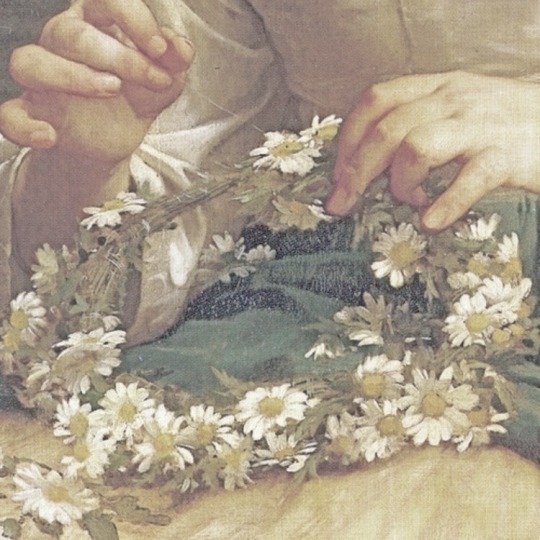



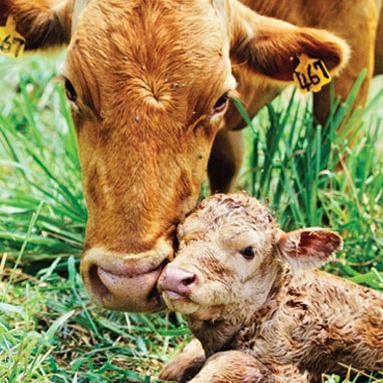

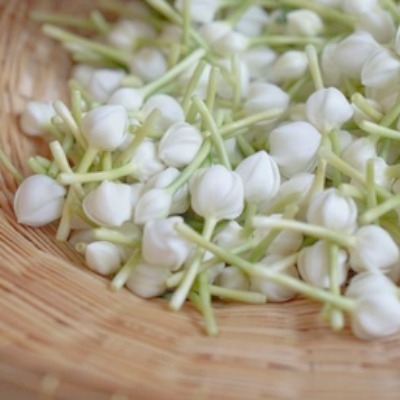

Imbolc shona daoibh!
(“Im-Olk Hunna yee-v”)
#imbolc#imbolg#gaelpol#brighid#brigid#saint bride#saint brigid#celtpol#gaelic polytheism#celtic polytheism#paganism#gaelic paganism#gaelic gods#celtic gods#celtic paganism#gaelic pagan#ireland#irish holidays#spring#spring aesthetic#grass aesthetic#nature aesthetic#ireland aesthetic#imbolc aesthetic#witchcraft#witchblr#moodboards#devotional moodboard#devotional moodboards
135 notes
·
View notes
Photo

Brigid the poet goddess, Brigid the healer and Brigid the blacksmith. The triple deity honoured today during Imbolc. Lá fhéile Bhríde shona daoibh #imbolc #stbrigidsday https://www.instagram.com/p/CZcaGuEq-5I/?utm_medium=tumblr
7 notes
·
View notes
Photo
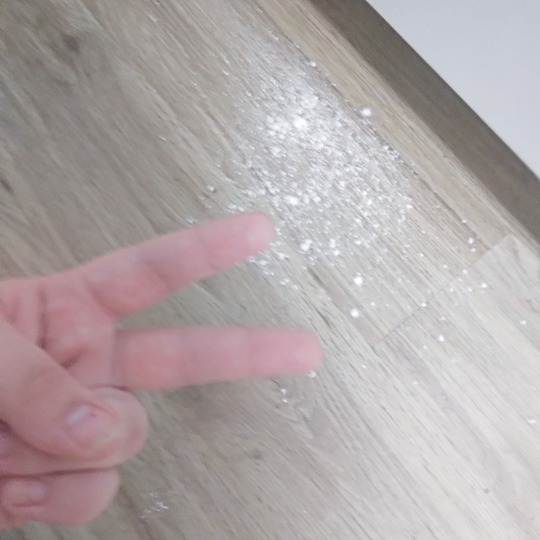
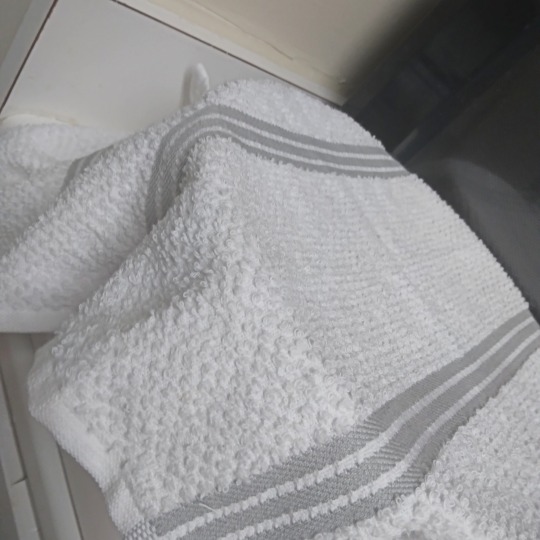
ah yes, the classic imbolc tradition of “fuckin’ up te kitchen in te name of pan only to have to clean the whole thing anyway, brutal imbolc shona daoibh”
#bread post coming soon as it's done!#imbolc#gaelpol#imbolc celebration#ireland#irish holidays#irish paganism#gaelic paganism#celtpol
3 notes
·
View notes
Text
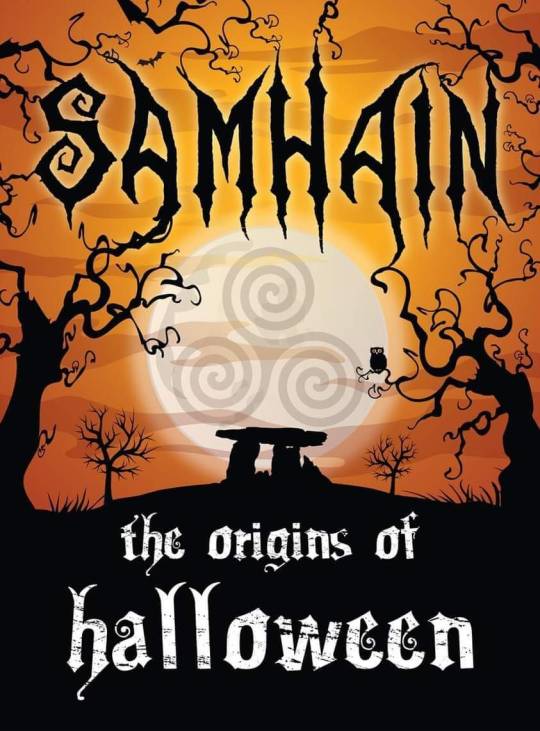
Samhain (Halloween) has its roots in the pagan traditions of Ireland and has been an important date since ancient times. Marking the end of the harvest and the beginning of winter, Samhain (pronounced “Sow-when") roughly translates as ‘end of summer’.
The people of ancient Ireland believed that the year was divided into a light half (beginning at Bealtaine) and a dark half (beginning at Samhain). Each day was seen as beginning at sunset and so the new year was also thought to begin with the arrival of the darkness, at Samhain.
Written about in some of Ireland’s earliest literature, many important events in Irish mythology happen during or begin at, Samhain. In addition, there are a number of ancient monuments, some built over 5000 years ago, that are aligned with the sunrise or sunset at Samhain.
Although its date is now fixed on the 31st of October, Samhain would have originally fallen on the astronomical Cross-quarter day, midway between the Autumn equinox and the Winter solstice (a few days later than the modern date of Halloween). The other cross-quarter days are Imbolc (February), Bealtaine (May), and Lughnasadh (August), all of which are ancient festival days.
In the mid-8th Century, Pope Gregory III moved the date of ‘All Hallows Day’ from 13th May (the date of the Roman festival of the Dead) to 1st November, possibly to coincide with the festival of Samhain. The night before ‘All Hallows Day’ then became known as ‘All Hallows Eve’ which was then shortened to ‘Halloween’.
Despite the ‘Christianisation’ of this ancient festival - in Ireland at least, Samhain still retained many of its pre-Christian traditions. It was seen as a liminal time, when the veil between this world and the otherworld was lifted, allowing the Aos Sí (faeries or spirits) to pass through. In order to appease these spirits, people would leave food for them outside the house.
A fruit cake called Barm Brack is traditionally served at Samhain, inside which, symbolic items were hidden. A person's future was foretold by the item they happened to find in their slice; for example, a ring meant marriage and a coin meant wealth.
The dead were also honoured at Samhain. The souls of those who had died since the previous Samhain were thought to revisit their old homes, one last time, before leaving for the otherworld (See previous post on Donn - Lord of the Dead). Often, places were set for them at the table and a chair put by the fire to welcome them.
Bonfires are also traditionally associated with Samhain when all fires would be extinguished and re-lit from the Samhain bonfire. These fires were deemed to have protective and cleansing powers with various associated rituals.
‘Mumming' or ‘guising’ (disguise) was also a popular custom. People, especially children, would dress in costume with faces blackened from the sacred bonfires to mimic the dead and offer protection from the supernatural forces at large during Samhain.
Jack-o-lanterns (now made from pumpkins, which come from America), is another tradition that originated in Ireland, where the lanterns were made from turnips or swedes. A folktale about a blacksmith named Jack who outsmarts the devil but wanders the earth undead gave the lanterns their name. (See previous post - The Tale of Jack O’ Lantern)
During the 1840s the potato blight forced nearly one million people to emigrate from Ireland to the United States, taking their Samhain/Halloween traditions with them. The earliest references to Halloween appeared in America shortly afterwards and since then it has become one of that country’s major holidays… in a somewhat altered form.
With all the crass commercialisation of the modern Halloween, we should all try and remember the origins of this ancient festival day.
Oíche Shamhna Shona Daoibh. . . !
Happy Samhain. . . !
7 notes
·
View notes
Photo
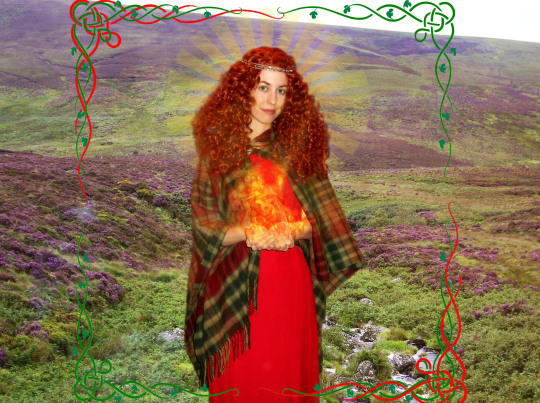
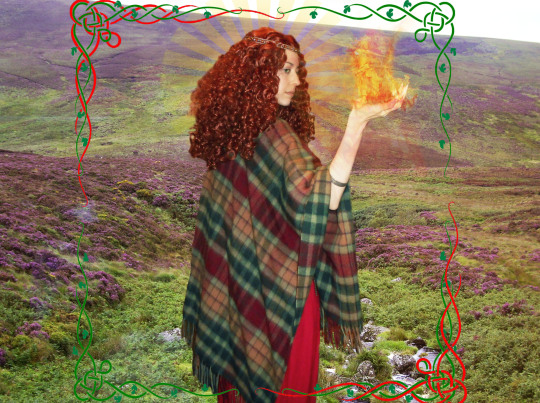

Imbolc is lá fhéile Bríde shona daoibh! Happy Imbolc and Brigid’ s Day! 😃🔥
Brighid is an Irish solar fire goddess associated with poetry and inspiration, fertility and healing, smithwork, crafts and music, and warlike protection. She’s one of my favourite goddesses in one of my favourite cultures.
➡️Wig: Spiral Curly Auburn lace-front from Wig Is Fashion @wigisfashion I’m in love with the curly wigs I got for my Celtic endeavours 😍💚
➡️The wool checked cloak/mantle/shawl and brooch I got in Glasgow are also so gorgeous and some perfect for Celtic reenactments ❤️
➡️Background pic is my own from a 2007 trip to Ireland
➡️Pics and edits by me
Brighid reenactment
Historical reenactment
Celtic reenactment
DeviantArt
FB cosplay page
IG cosplay page
#brigid#imbolc#celtic world#celtic reenactment#brighid#brigid's day#wheel of the year#irish myth#celtic mythology#irish goddesses#celtic goddesses#ireland#goddess feminism#celtic#celts#historical reenactment#My historical reenactment#celtic costume#neodruidism#mythology#mythology cosplay#irish mythology#celtic calendar#candlemas#My cosplay#goddess brigid#fire goddess#celtic cosplay#historical#neopaganism
3 notes
·
View notes
Text
consider doing something creative for imbolc! brigid has associations with spring/renewal/healing, but she's also a crafter: a poet and blacksmith. you can honor her by making something and reveling in the process, not just the end result. dust off that guitar, mix those paints, thread that needle and get to it 🔥 lá fhéile bríd shona dhaoibh
40 notes
·
View notes
Text
Lá Féile Bríde shona dhiabh!
Or like, Imbolc if you’re into it. I think St. Brigid’s day is supposed be all Catholic because the bastards stole it, but Brigid’s pretty pagan in an awesome way. Like if you go to Kildare there used to be an order founded by her that kept a fire temple with an eternal flame and if a man stepped inside, his limbs would wither or he’d go insane so like, she sounds like a cool chick is what I’m saying.
Anyway, first day of spring so THANK FUCK WINTER IS OVER OMG HATE THAT COLD ASS BITCH. Bring back the sun is what I’m saying.
12 notes
·
View notes
Text
Happy Imbolc 2020!
#EarlyBiz #FirstTMaster #fblogger New #blog by @TheWandCarver ~ Happy Imbolc 2020!
By Isabella @TheWandCarver
Instagram: @thewandcarver
My Brigid art by Emily Balivet on Etsy
Hello, a bit early! Imbolc, of course, is Sunday 2 February. Imbolc or Imbolg, also called [Saint] Brigid’s Day, in which case the day would be called Candlemas [for Christians], [Irish: Lá Fhéile Bríde, Scottish Gaelic: Là Fhèill Brìghde, Manx: Laa’l Breeshey], is a Gaelic traditional festival marking…
View On WordPress
#brighids cross#brigid brighid brigit#Candlemas#goddess brigid#happy imbolc 2020#how to celebrate imbolc#imbolc 2nd of february#Imbolc shona daoibh go léir#imbolg#Laa&039;l Breeshey#Là Fhèill Brìghde#Lá Fhéile Bríde#sacred correspondences for brigid#saint brigids day
0 notes